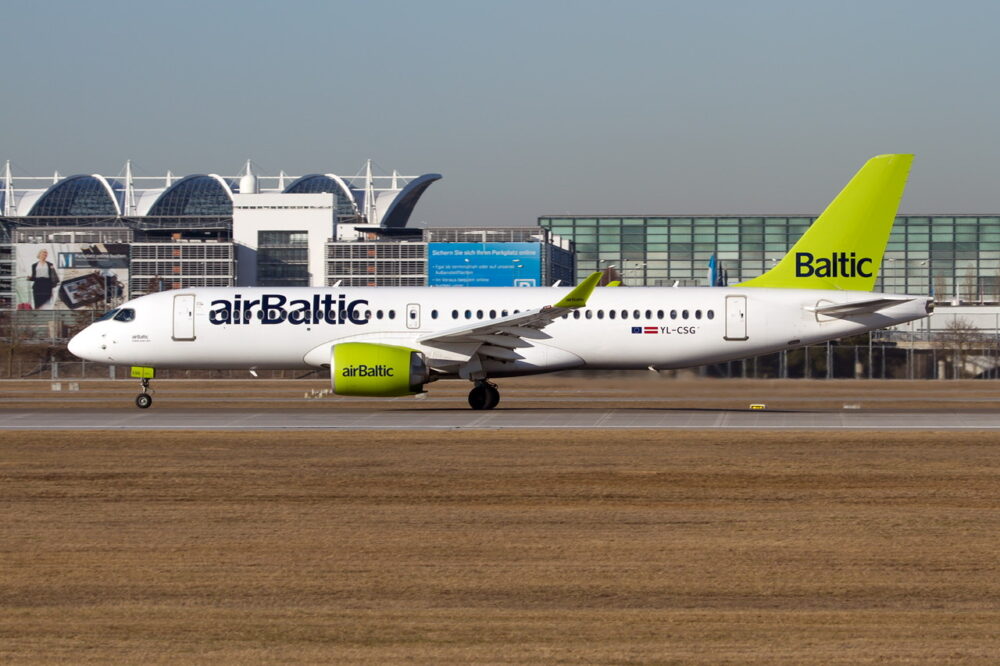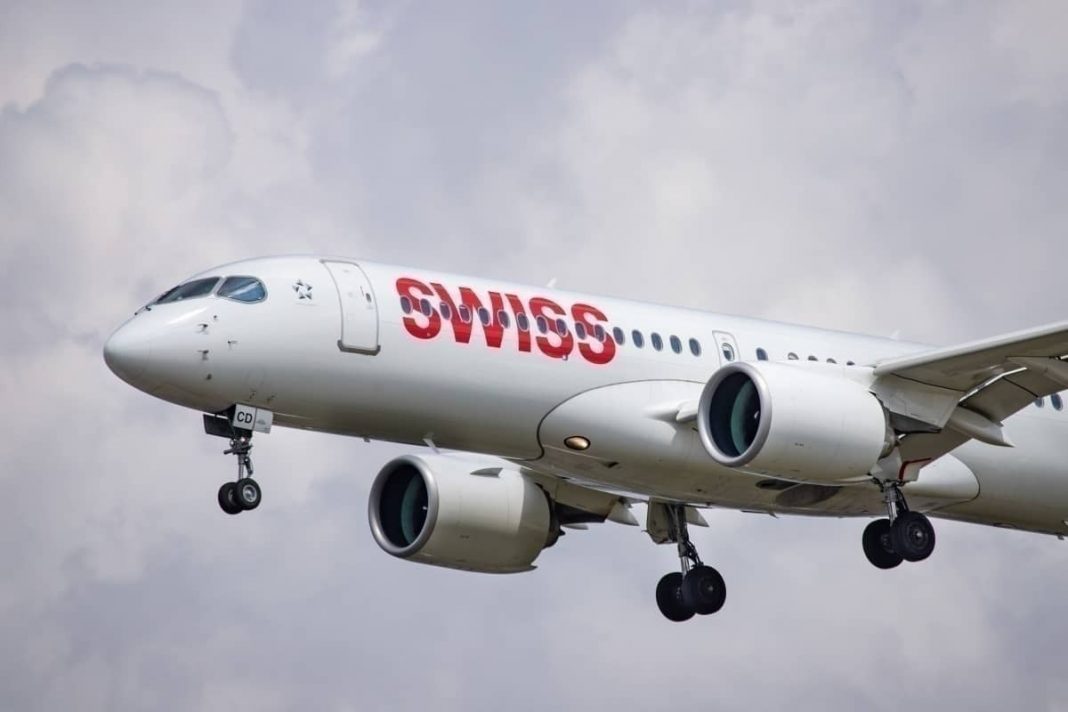The Boeing 737 is one of the worlds most successful aircraft types. If you have flown anywhere it is more than likely you have been on the world most widely used jet, with just under 15,000 units being ordered over the last fifty years. However, it looks like another contender has come to take Boeing’s crown, the Airbus A220.

Airbus previously rolled out a competitor to the Boeing 737, the Airbus A320, and has had plenty of success in the market. However, this new jet could sneak in and cause a major upset against the industry giant.
Just like in our previous articles where we prove which is better, the Boeing 777x vs Airbus A350 and 787 Dreamliner or Airbus A350, we are looking for either a clear winner or how each jet has a distinct performance over the other in various categories.

Why are we comparing these two planes?
The new Airbus A220-300 is new on the market and incorporates other design principles not found in other Airbus planes. As it comes from Bombardier in Canada (Previously called the CS series, but now in a 49% joint venture partnership with Airbus it has a new name), they have different expertise, materials, technology and more.
Plus, as icing on the cake, Boeing previously tried to embargo the A220 from being sold to carriers. It required legal help from Airbus to get it through to their customers. Now for this underdog, it’s personal.
How are they selling?
Recently, Delta Air Lines has been taking on its first A220 aircraft. Moreover, the Atlanta-based carrier will have polenta more in the skies this decade. This progress has followed JetBlue’s upcoming first delivery of the jet. Altogether, there are currently 639 orders for the type.
The Boeing 737 absolutely destroys those numbers with just under 15,000 orders. However, with several decades over the newcomer, it is hardly fair to compare the two when it comes to sales.
Which two planes will be tested?
Naturally, there are 13 different 737 models, and 2 (and a half) A220 models. In the principle of fairness, we will be looking at the most popular Boeing 737-800 vs the A220-300, based on having almost equivalent passenger numbers.
There is, of course, bigger and small variations of both, from smaller 737’s to bigger A220-500’s.
We will be comparing them to several different items found in the list below. We will take the perspective of an Airline looking for the most band for their buck. This means whilst an airline might have a cool feature (Like the big windows on an A220) it does not directly lead to more profit thus will not be included.
Let’s get to it!

Boeing 737 vs Airbus A220
737-800
Cockpit crew: Two
Seating, 2-class: 160
Seating, 1-class: 175
Overall length: 102–138 ft (31–42 m)
Wing: 112 ft 7 in (34.32 m)
Overall height: 41 ft (12 m)
Cabin width: 139.2 inches (3.54 m)
Fuel capacity: 20,100 L
Cargo capacity: 882–1,373 cu ft, 25.0–38.9 m³
Cruise speed: Mach 0.82 (473 kn; 876 km/h)
Takeoff Runway: 2,290–2,650 m
Range: 2,935–3,010 NM
Engines (2×): CFM56-3 series
Maximum thrust: 20,000–23,500 / lbf 89–105 kN

A220-300
Cockpit crew: Two
Seating, 2-class: 130
Seating, 1-class: 160
Overall length: 127 ft 0 in / 38.7 m
Wing: 112 ft 7 in (34.32 m)
Overall height: 37 ft 8 in / 11.5 m
Cabin width: 129.0 in / 3.28 m
Fuel capacity: 17,213 L
Cargo capacity: 1,116 cu ft / 31.6 m³
Cruise speed: Typically Mach .78 (447 kn; 829 km/h)
Takeoff Runway: 6,200 ft / 1,890 m
Range: 3678 NM
Engines (2×): Pratt & Whitney PW1500G
Maximum thrust: 21,000-23,300 lbf / 93.4-103.6 kN

Comparing specs
Passenger Seating
It seems that the Boeing 737 can just fit in a few more passengers than the Airbus 220. More paying passengers, more revenue.
Winner: Boeing 737
A possible stretch in the future might make the Airbus 220 more competitive, but it remains to be seen if it would encroach on the Airbus A320 business.
Cabin Size
The Boeing 737 has a bigger cabin than the A220, and can fit more passengers and cargo on board. the A220 is five seats across and the 737 is six seats across. It’s only 10 inches wider and thus room enough to get a win.
Winner: Boeing 737
Seat Size
Surprisingly, there are reports that the newer 737’s have smaller seats than the A220. In an effort to cram as many people on board the 737 as possible, the A220 comes out ahead, with 1 inch wider seats, and up to 2 inches more in pitch (In Economy). However, this is up to the airline and it’s not fair to rate a plane based on their fit out.
Winner: Draw
Cargo Capacity
The Boeing 737 has more cargo capacity on board due to being a bigger plane. This is fairly tight, however, there is a clear winner.
Winner: Boeing 737
Speed and Cruise
Turns out, the bigger plane can actually fly significantly faster. We did not expect this going in but the Airbus is rather slower than the Boeing 737. Fast speed means more turnarounds and more flights in a day.
Winner: Boeing 737

Range
However, here is where Airbus A220 takes the fight back. The Airbus jet has a range of almost 2,000 more kilometers than the Boeing 737. This means hundreds of more routes and way more versatility when it comes to route planning.
Winner: Airbus A220.
In fact, it’s because of this large range that some new airlines are using this jet to build a new flight business model!
Winner: Airbus A220
Takeoff Runway
The smaller plane requires a shorter runway. This is no surprise but does mean the Airbus jet could fly to more airports than the Boeing 737.
Winner: Airbus A220

Let’s talk about Fuel Efficiency
You may have noticed that the Airbus A220 carries far less fuel than the Boeing 737 and that the range of the Airbus is significantly more. This is evidence that the Airbus A220 is far more fuel efficient, and thus may actually be far cheaper to run than any Boeing 737. This would make Airlines far more attracted in buying the A220 over the Boeing 737 as the price of fuel goes up.
The A220 has been designed to be a considerably fuel-efficient jet. When taking into account the number of fliers on board, the efficiency is advertised by Airbus at 120 miles per gallon (MPG). Compared to other planes in its class, this outstrips almost every other model by a great deal.
When it comes to fuel burn, the A220 was marketed to achieve 20% better fuel burn than similarly sized planes. In reality, the A220-100 can achieve 9.1lb/mile on a short (500nmi) flight, and 10.1lb/mile on longer flights. Meanwhile, the -300 has been recorded to achieve between 10.11lb/mile and 11.01lb/mile. This figure is lower than any other jet with a similar capacity. Altogether, these factors will give considerably environmental and cost savings.
Winner: Airbus A220

What about cost?
Now, if we were an airline and wanted to buy one of these jets, which is the better deal?
Boeing 737: Between $51.5 million and $87 million, on average (as of 2018)
A220 / CS300: $89.5 million (As of 2018)
The Boeing 737 is significantly cheaper, that you can actually buy two (with discounts) for the price of one A220. That may instantly negate any fuel savings made by an airline. This is simply because Boeing has a mass production line that produces hundreds of these planes a year. Airbus and Bombardier would need a similar setup (and similar orders) to even compete with their A220.
Winner: Boeing 737

Which is the better plane?
As with all answers to this question, it depends what you want the jet for. If you are flying larger amounts of passengers rapidly and need a reliable and versatile jet, that has a proven record and is cheaper to buy, then the Boeing 737 is the way to go.
However, many airlines actually lease planes and may not care about how much it costs, but which is cheaper to run. This is the A220, with its bigger range and fuel efficiency makes it an excellent contender for the Boeing 737 killer.
If Airbus and Bombardier could make a CS-500 / A220-500 version that could seat 160-200 passengers, and get the price low enough, then Boeing would be very worried indeed.

Post Script: Why not compare Boeing 737 MAX 8 vs Airbus A220/CS300
Many commentators have written in asking why don’t we compare a new plane (A220-300) with Boeing 737 MAX 8. After all, the Boeing 737 MAX 8 has the advantage of new technology, new engineering and has an equal astonishing large amount of orders (Over 4,000 for the 737 MAX varieties).
However, the above principles still very much apply. The newer 737 MAX 8 can hold up to 210 passengers, flies a little further in range than the A220 (In the order of a few hundred kilometers) but requires 7,000 more liters of fuel to do so. It’s a bigger plane and would be more appropriate to rival the A320 rather than the A220. The A220 is cheaper to run…but the newer Boeing 737 MAX 8 (and MAX 10) may have enough extra passengers on board to justify the extra fuel.

What do you think? Do you like the 737 or the A220? Let us know in the comments.
[ad_2]
Source link


